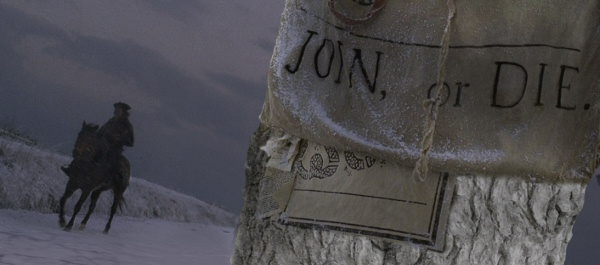John Adams Miniseries: Revolution, Politics, and Love

In one scene of the HBO miniseries John Adams, Adams tells Thomas Jefferson, "You, sir, are a walking contradiction." Benjamin Franklin responds, "We are all contradictions, Mr. Adams."
In many ways, that sums up the theme of this character-driven historical miniseries. Don’t expect the iconic images of the Founding Fathers that we are so often given. Neither are the flaws of these very-human revolutionaries magnified. What emerges is a story of John and Abigail Adams and their contemporaries in all their glorious contradictions. Likewise, the period of the American Revolution is shown as a time when courage and sacrifice often mingled with acts of lawlessness bordering on anarchy—which it was.
The talent behind the production is exceptional.
John Adams is a seven-part miniseries that will air over six weeks on HBO, beginning with a double episode on March 16 at 8:00 p.m. Eastern Time. Subsequent installments run each Sunday at 9:00 p.m. through April 20.
{default}Based on David McCullough’s Pulitzer Prize–winning biography John Adams, the miniseries begins with the Boston Massacre, March 5, 1770, and ends with the deaths of Thomas Jefferson and John Adams on July 4, 1826.
The talent behind the production is exceptional. Tom Hanks and Gary Goetzman, the creative team that brought Band of Brothers to television, were executive producers. Tom Hooper (Longford, Elizabeth I) directed, and Kirk Ellis (Into the West, Anne Frank: The Whole Story) adapted the script. Ellis also co-produced along with Frank Doelger (The Gathering Storm).
Paul Giamatti (Cinderella Man, Sideways) portrays John Adams wresting with his fiery revolutionary zeal and personal ambition that are in conflict with his longing to be with his beloved wife and family. Laura Linney (The Savages, Kinsey) plays his wife, Abigail, an educated woman who is his confidant and partner in all things. She is supportive of her husband yet resentful of the missions that take him away from her and the children.
Every scene is filtered through John or Abigail. This gives viewers a sense of the uncertainty and fear experienced in a time of revolution and war when communications could take days or weeks to reach their destination. It also leaves viewers to ponder questions such as whether Adams’ strident insistence for increased French naval support or Franklin’s oblique, libertine approach to dealing with the French was the most effective in ultimately obtaining the desired support on the seas.
The series does an excellent job of depicting life in the late eighteenth century, as John and Abigail and their contemporaries knew it. Colonial Williamsburg, which allowed for 360-degree filming thanks to the absence of such modern distractions as utility lines, stands in for Boston and Philadelphia.
Production director Genna Jackson’s crew went to such extraordinary lengths as using pegs instead of hinges on barns; hand-coating 14,000 window panes with epoxy to create the impression of hand-blown glass; and even hanging thousands of silk leaves on trees to replicate Philadelphia’s foliage.
Over 40,000 wardrobe items were required. Some 4,200 extras worked on the scenes shot in America and 1,500 more for those filmed in Europe.
[continued on next page]
Pages: 1 2

